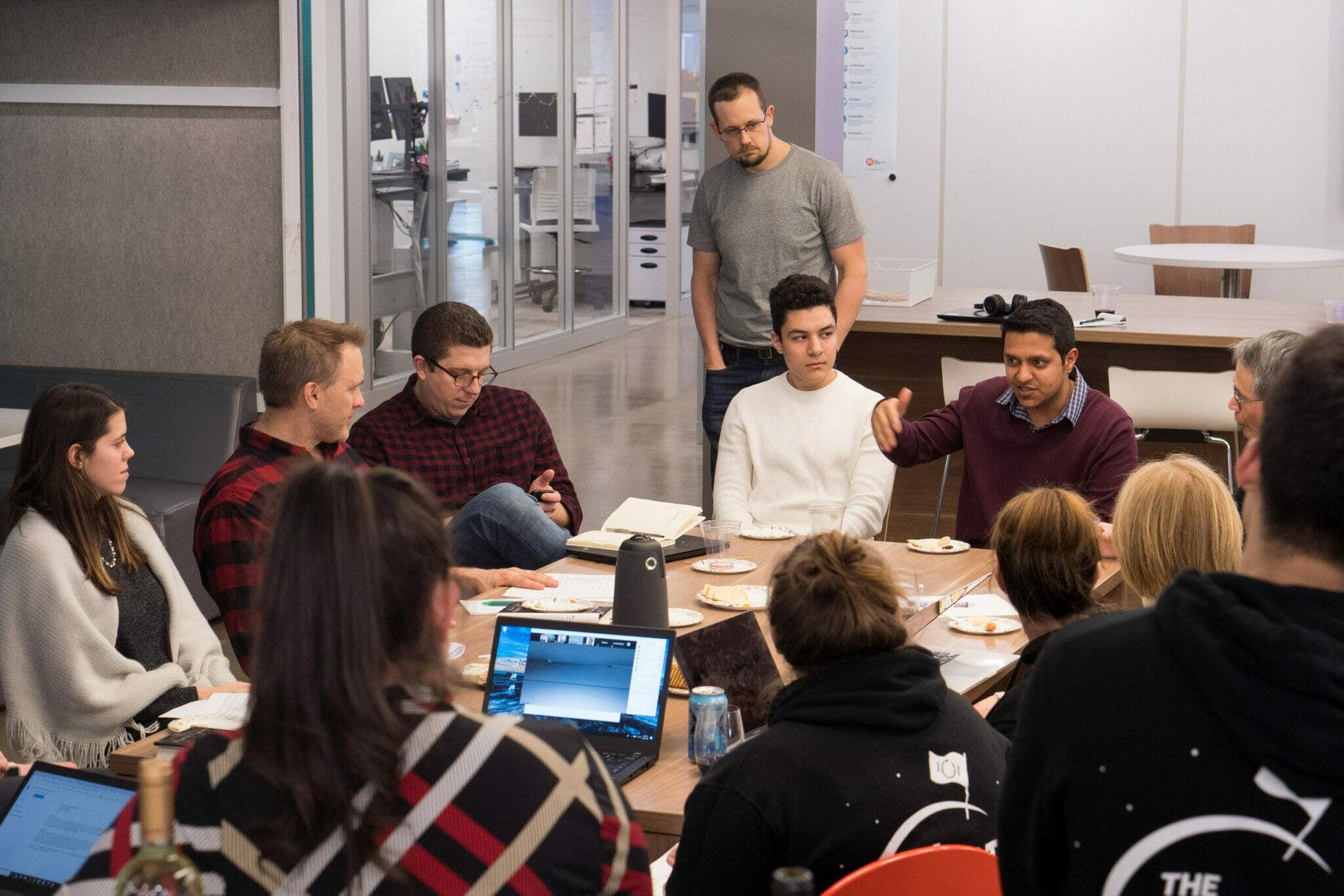Sar Warner (she/her) works at Slack as a manager on the Learning & Development team focused on onboarding. Sar leverages her M.A. in Education from U.C. Berkeley and her background in career development and curriculum design to create engaging, impactful, and creative development programs at Slack. Originally from Massachusetts, Sar now lives in Oakland with her partner and her dog, Clementine.
What was your last onboarding experience like? Did it feel like drinking from a fire hose? Was your manager nowhere to be found? Did you experience “death by PowerPoint?” While all onboarding programs exist to help new employees ramp up quickly and efficiently, some do it better than others. Setting up laptops and accounts, accessing and reading relevant documentation, learning about benefits and what different departments do is extremely important, but when onboarding programs focus solely on compliance and clarification without a focus on company culture and connection, job satisfaction, performance, and retention can take a hit.
So what does Slack do to build culture and connection during onboarding? Our program focuses heavily on inclusion, community, and belonging during week one—not only to help our new hires feel engaged and happy but also to encourage and teach them to be cultural stewards as early as possible.
Here are five ways we build culture during onboarding:
1. Welcome to Slack session: belonging
During the first onboarding session, Welcome & Expectations, one of the first slides new hires see says “You Belong Here.” This idea is reinforced throughout the week. Imposter syndrome typically shows up during onboarding. Reminding new hires they were chosen for a reason—that their department and their manager believe they’re the best person for the job and they not only fit in here but belong here—can go a long way in helping them feel strong engagement during their first week.

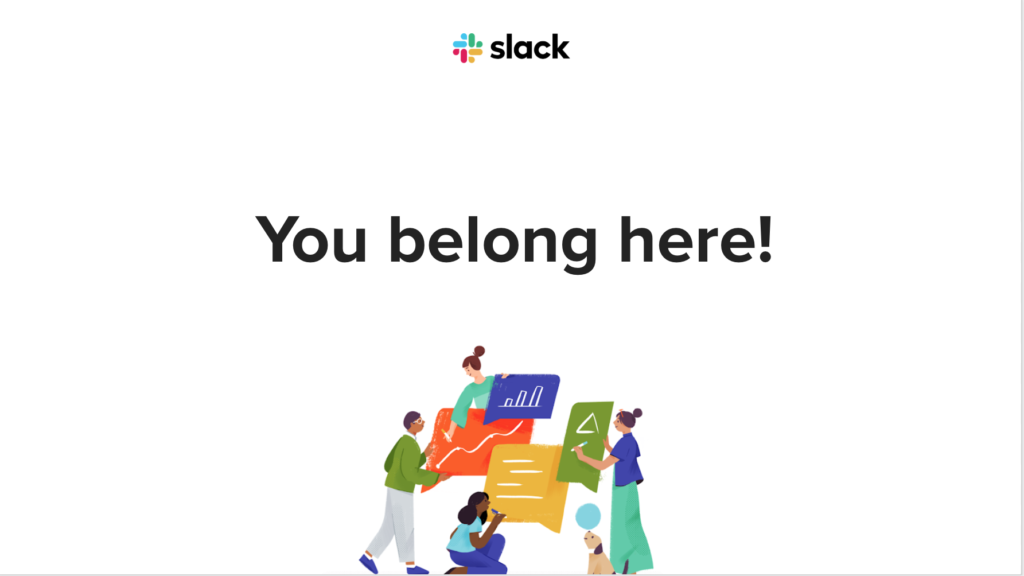
2. Private cohort-based channels: community
Each week, we create a private channel for that cohort of new hires and add the onboarding team. This private channel has a few main purposes:
- For new hires to talk to each other and stay connected beyond the first week of onboarding
- To provide a safe space to learn how to use our product
- To distribute relevant information.
It’s awesome to see folks congratulate each other on reaching their 6-month and 1-year anniversaries long after global onboarding.
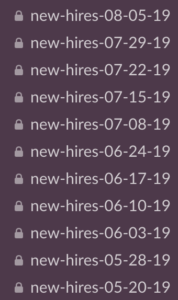
3. Scavenger hunt: inclusion, community, belonging
We used to take new hires on an office tour to show them where the bathrooms and fire exits are, as well as where to put their lunch. But we realized new hires were retaining little to none of this information. We like to emphasize the “pull not push” learning methodology throughout our onboarding program and so decided a scavenger hunt would best serve ourselves (no more tour guide duties!) and our new hires (way more fun). During this scavenger hunt, we have new hires split into groups armed with a task list, a map of the building, and their own cell phones. We have them find the mailroom, take a selfie in our game room, figure out the IT help bar’s hours, and use the touch screens around the office to locate some seat numbers—just to name a few. While many of these task lists seem trivial and fun, there’s so much more this scavenger hunt is doing to prepare these new hires for working at Slack.
First, we want people to feel a sense of community, so working in groups and getting to know people from all different roles while taking selfies with each other helps build that camaraderie and community. Second, we want people to feel like they belong. We’ve found that a very simple way to make new hires feel like they belong on day one is to help them understand the physical space around them and empower them to figure out how to find where they need to go. Third, we want all of our new hires to feel included—and not have to divulge any personal information in order to feel included. For example, folks who are gender non-conforming or in the process of transitioning may not want to out themselves by asking where the gender-neutral bathrooms are, so we have everyone locate and count the number of gender-neutral bathrooms on each floor as part of the scavenger hunt.
Join 10,000 companies solving the most complex people problems with PI.
Hire the right people, inspire their best work, design dream teams, and sustain engagement for the long haul.
4. Leveraging our product: belonging
We have two product sessions for our employees to help them understand how we use Slack at Slack. Understanding the platform and how we optimize our product for our own use is key to helping new hires feel welcome and contributing early on. During one of these sessions, we’ve leveraged Workflow Builder to teach our new hires about the search function on Slack. This activity is called #escape-the-room. New hires must first learn how to search, then they have to find a 4-digit code hidden inside of a variety of Slack messages and channels to unlock the puzzle. When they get the right code, they “escape the room” and they’re awarded a completion message celebrating their success in a public channel.

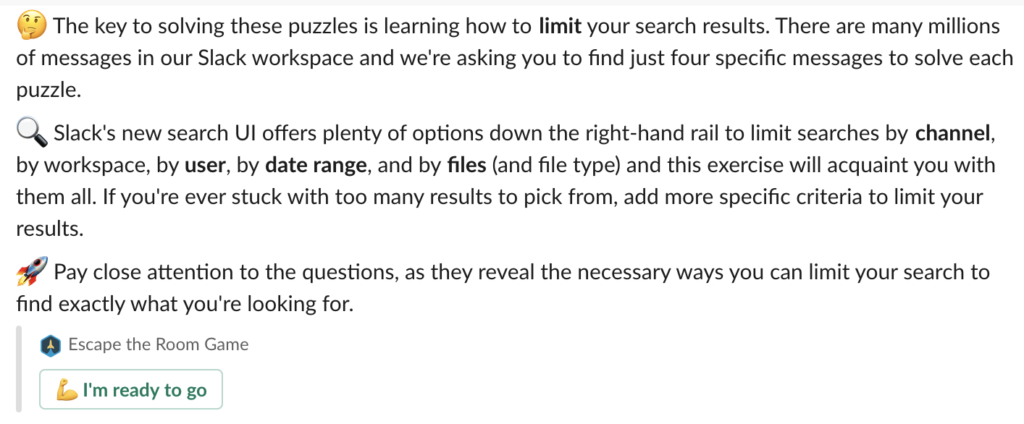

5. Cultural Immersion Program: inclusion, community, belonging
Recently, we launched a 3-hour cultural immersion program during onboarding focused on our four attributes: Smart, Humble, Hardworking & Collaborative. During this session, new hires learn examples of how these four attributes show up in our organization through a LEGO® building team challenge, storytelling, and feedback training. The program is designed so that everyone feels included (through a variety of participation options), community is built (through group activities and individual sharing), and people understand they belong (by understanding our culture a bit more). Perhaps the most important outcome of this session is how it empowers each new hire—only three days in—to contribute to our culture through goal-setting exercises and learning about how to give and receive feedback.
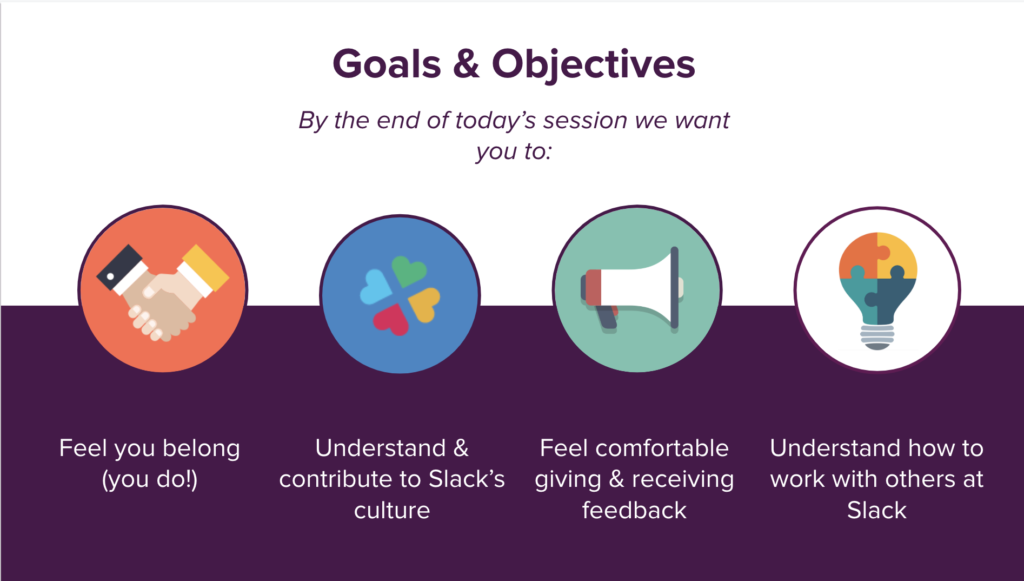
Culture extends beyond onboarding.
These five examples are by no means exhaustive. Building culture during onboarding extends far beyond the classroom walls and the onboarding team. It’s built through friendly interactions with the receptionists, your first one-on-one with your manager, emoji reactions in Slack, and countless in-person and in-Slack micro-behaviors. Ultimately, an exceptional onboarding program is built upon the foundation of an exceptional company—and it’s impossible to have one without the other.
Join 10,000 companies solving the most complex people problems with PI.
Hire the right people, inspire their best work, design dream teams, and sustain engagement for the long haul.








